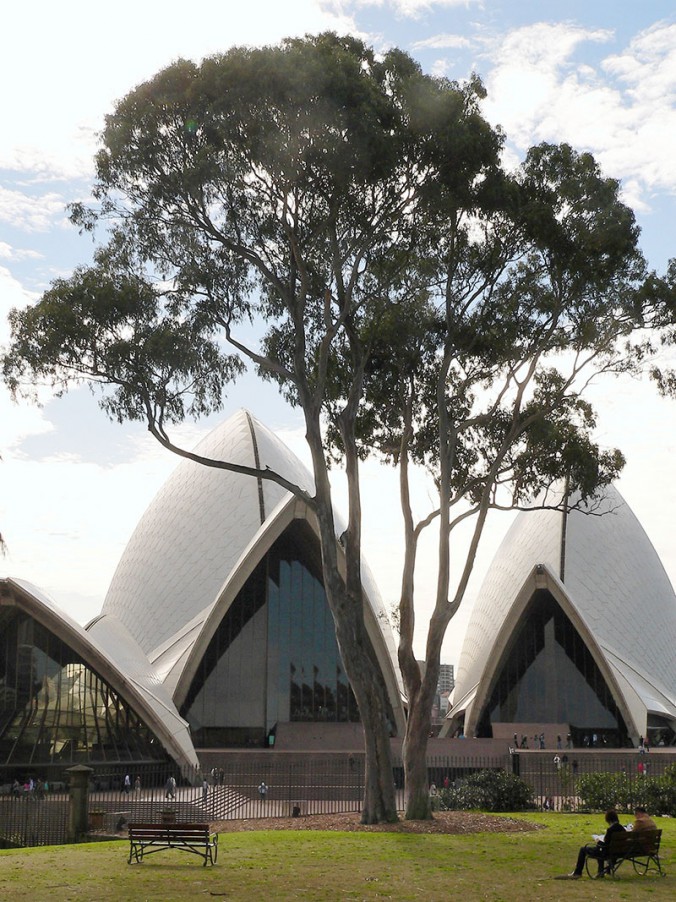The only surviving eucalypts from the natural forest in the garden are two twin red gums perched up on the cliff behind the Opera House on the Bennelong lawn. No doubt they were mere saplings in 1788 when the 11 tall, wooden ships of the First Fleet arrived in Sydney. Incredibly, this Bennelong twins alone have survived so close to the city. Referring to them, Ashley Hay (Gum, 2002 Duffy & Snellgrove, Potts Point, NSW, Australia.) wrote:
The view from [its] crown began to change from the canopies of other eucalypts growing along the land’s ridges and streams, from clear distance running out to the blue of the Blue Mountains, to new tall things. Forests of wood and brick, and later glass and concrete and steel, pushed towards the sky with flashes of colour and light.
These mute red gum sentinels, standing witness to the unfolding events surrounding a distant English penal colony experiment that would change the face and fortune of Australia, also captured the imagination of journalist Bob Beale. Writing in the Sydney Morning Herald on 29 March 2008, he said:
As saplings, they shared daily life with the original occupants of the area, the Cadigal, who knew Bennelong Point as Tuhbowgule. From there you would have seen smoke from many campfires and women out fishing on the harbour in bark canoes. You would have heard the heard the thud of stone axes, the laughter of children and sometimes the ancient songs of the mysterious kangaroo and dog dance initiation ceremony held at Woccanmagully now known as Farm Cove.
You would have seen Cadigal men angrily brandishing their spears as the First Fleet dropped anchor, then convict work parties landing, the first tents erected, the British flag flown, gunshots fired into the air and toasts drunk to a nation on the far side of the planet. Soon enough, metal axes rang and trees began falling.
